Creating Climate Risk Assessments for National-Level Water-Related Hazards
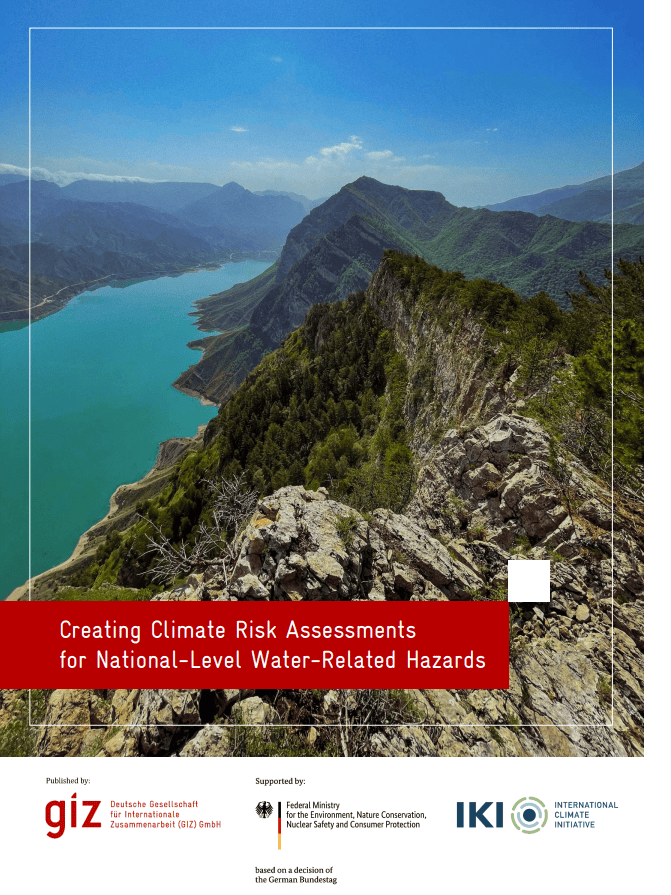
This good practice summary report offers guidance on identifying and analysing national-level water-related hazards, building on experiences from Georgia, Kazakhstan and Mongolia.
Bridging the gap between climate goals and social protection solutions: New guidance on how to integrate social protection in countries´ climate commitments
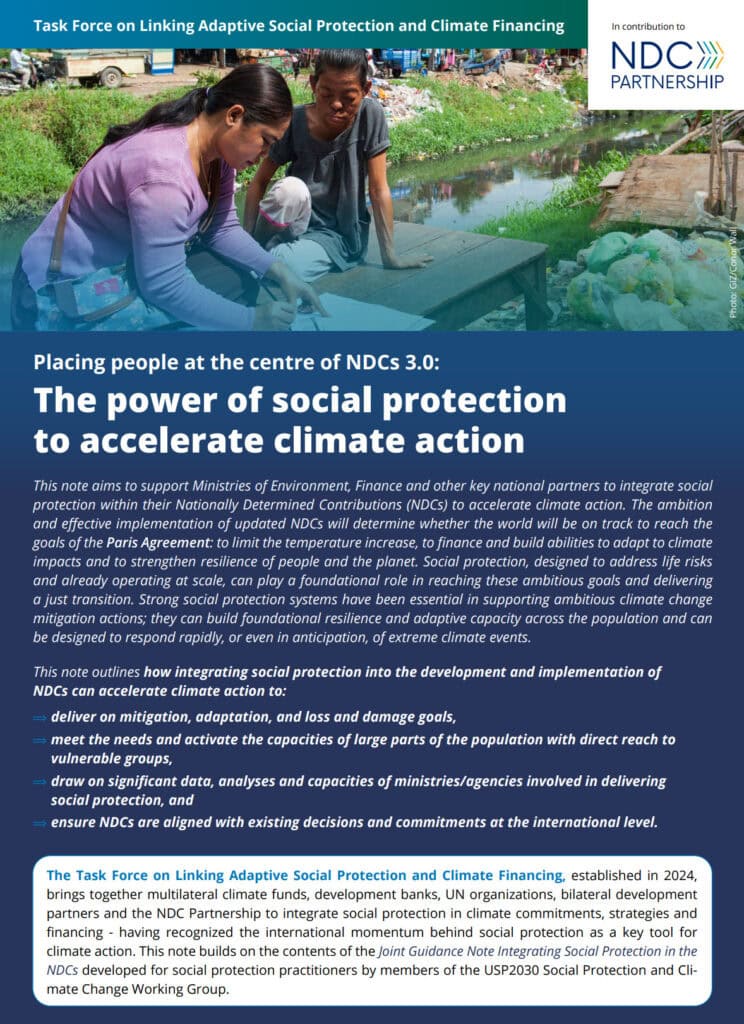
A newly formed international Task Force on Linking Adaptive Social Protection and Climate Financing aims to bridge the gap between climate goals and social protection solutions. Its newly published note demonstrates how social protection systems can be strategically leveraged for climate action.
Guía didáctica para el uso del cuento: bajo la sombra de los almendros se vive mejor
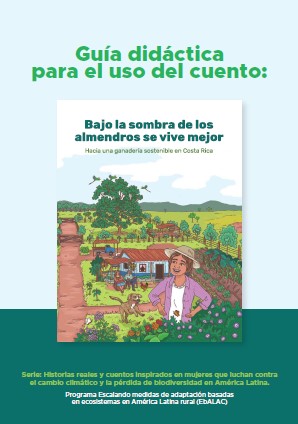
En 2024, EbA LAC elaboró los primeros textos de la serie: Historias reales y cuentos inspirados en mujeres que luchan contra el cambio climático y la pérdida de biodiversidad en América Latina, para ser usados en procesos de capacitación, difusión de información y empoderamiento en temas claves como: cambio climático, pérdida de biodiversidad, cuidado del agua y del medio ambiente, desigualdades en los impactos sobre mujeres y hombres, equidad de género, ganadería y producción sostenible, gestión y acción colectiva comunitaria en estos contextos.
Con la difusión de estos materiales, EbA LAC quiere dar la oportunidad a otras mujeres, a jóvenes – y hombres – de aprender de las experiencias de las protagonistas que muestran que existe la posibilidad de lograr cambios y ofrecen herramientas concretas para construir un futuro más sostenible y resiliente al cambio climático con iniciativas comunitarias. El factor de éxito que comparten las historias es la existencia de mujeres fuertes, capacitadas y empoderadas para liderar estos cambios.
Bajo la sombra de los almendros se vive mejor: Hacia una ganadería sostenible en Costa Rica

Bajo la sombra de los almendros se vive mejor: Hacia una ganadería sostenible en Costa Rica es una guía práctica y motivadora que empodera a mujeres rurales, jóvenes y grupos de personas productoras a enfrentar los desafíos del cambio climático y la pérdida de biodiversidad. A través de historias reales y estrategias efectivas, este material ofrece herramientas para construir un futuro más sostenible y resiliente al cambio climático.
Este libro es un homenaje a las mujeres que trabajan la tierra, cuidan el ganado, cultivan alimentos y transmiten conocimientos ancestrales con su labor. Es un reconocimiento a su valentía para organizarse, aprender y liderar cambios en la construcción de un futuro más equitativo y sostenible para todas y todos.
La ganadería en Costa Rica es una actividad de gran relevancia para el desarrollo de las zonas rurales, genera y distribuye bienestar económico y empleo a lo largo de todos los eslabones de las agrocadenas de la carne y la leche del país. Por eso, nos llena de orgullo y satisfacción afirmar que la ganadería costarricense es totalmente diferente de otros modelos a nivel mundial, ya que logramos desarrollar sistemas de producción sostenibles, en un entorno que permite la estabilidad del negocio, con seguridad jurídica y normas claras en torno a lo ambiental y lo productivo, lo que ha propiciado un ambiente que favorece la innovación.
Manual de buenas prácticas para la Adaptación basada en Ecosistemas – Visión del pueblo Maya K’iche’ –
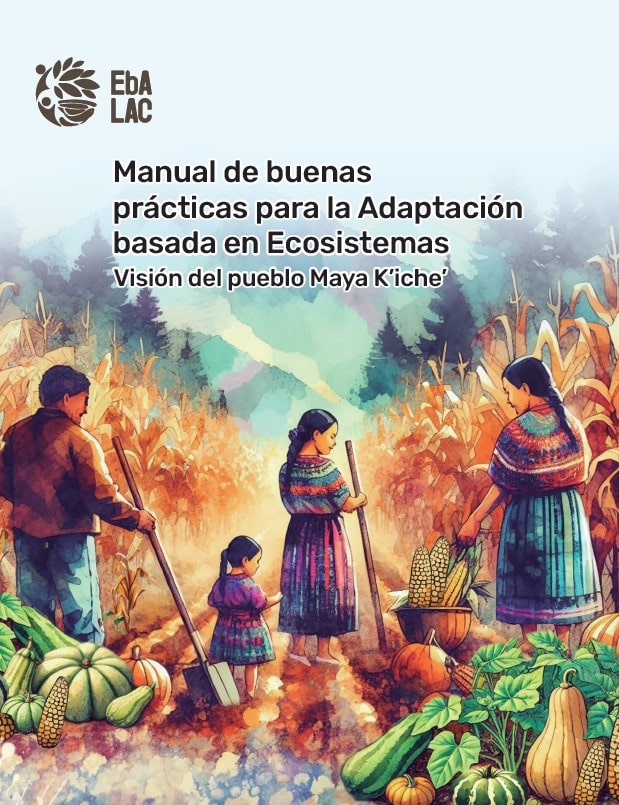
Manual de buenas prácticas para la Adaptación basada en Ecosistemas
– Visión del pueblo Maya K’iche’ –
Manual ilustrado con instructivo sobre buenas prácticas abe desde la visión del pueblo Maya K’iche’, es el resultado de la investigación e integración de los conocimientos ancestrales del pueblo Maya K’iche’ para desarrollar prácticas, fortalecer conocimientos y habilidades sobre la adaptación basada en ecosistemas, que han sido desarrollados en el territorio del departamento del Quiché en los municipios priorizados por Programa “Escalando Medidas de Adaptación basada en Ecosistemas en áreas rurales de América Latina” (EbA LAC).
Effectively delivering on Climate and Nature: NDCs, NAPs and NBSAPs Synergies – A checklist for national policymakers
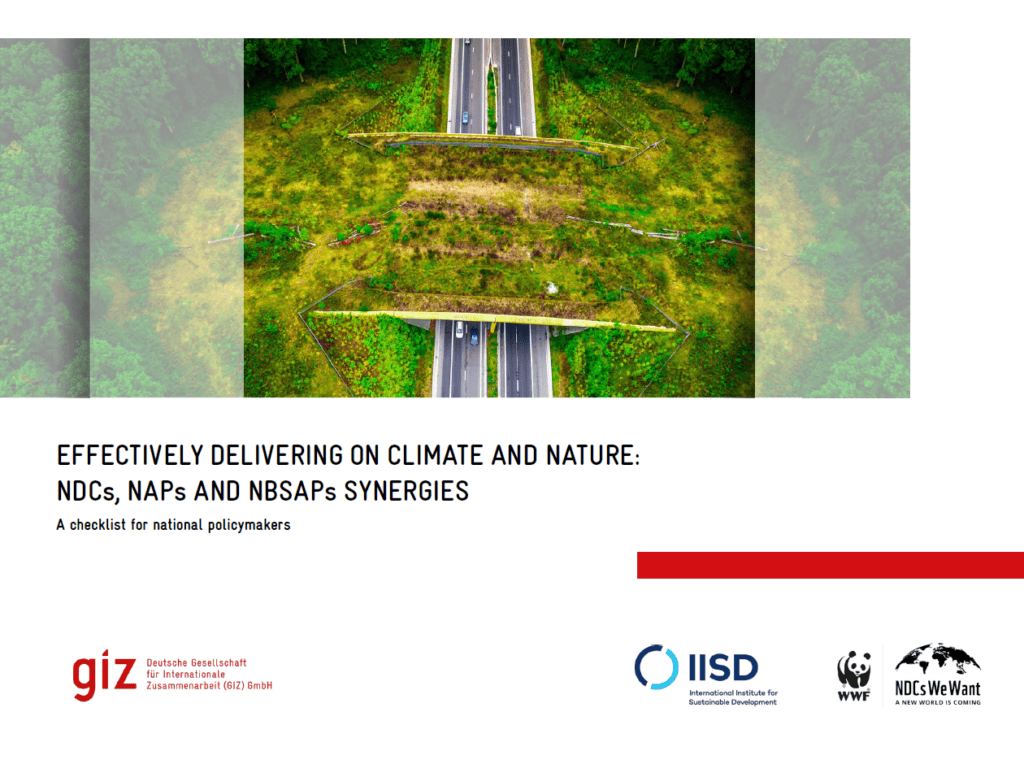
This checklist for national policymakers illustrates potential opportunities and interactions during the development or update of the NDCs, NAPs, and NBSAPs. It provides a list of points for consideration to enhance synergies and co-benefits throughout planning and implementation phases, ensuring gender-responsive and socially inclusive approaches.
Climate Change Adaptation and Mitigation in Agri-Food Systems: A Compendium of Analytic Tools for Practitioners
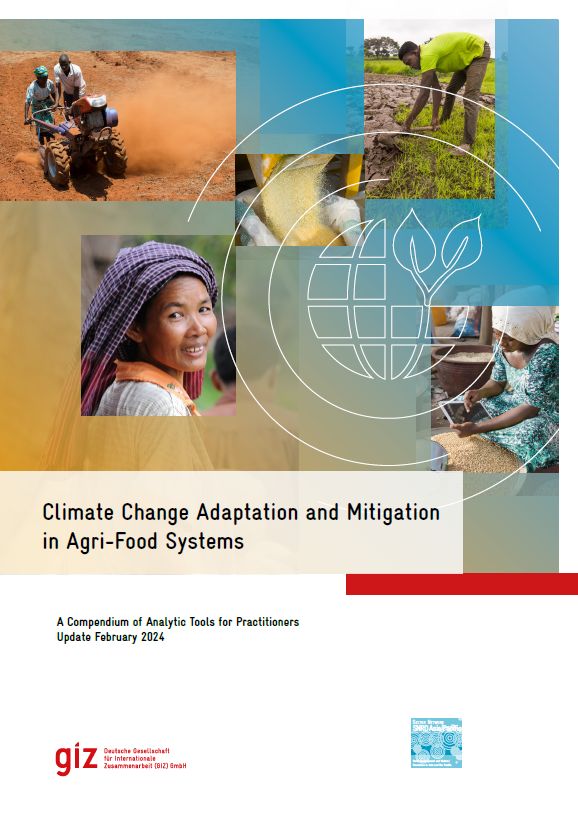
The Compendium provides an overview of the most relevant tools that can be applied to integrate climate change adaptation and mitigation into development projects. It categorizes these tools by level and complexity of application, methodology and target group and prepares the tools for a more convenient application by practitioners. The tools enable entry points for agroecological transformation and identify site-appropriate agroecological practices.
The interactive Product Landscape complements the Compendium and gives a visual overview of and easy access to the tools as well as additional relevant documents.
Implementation Guidelines on Green Wall and Green Roofs
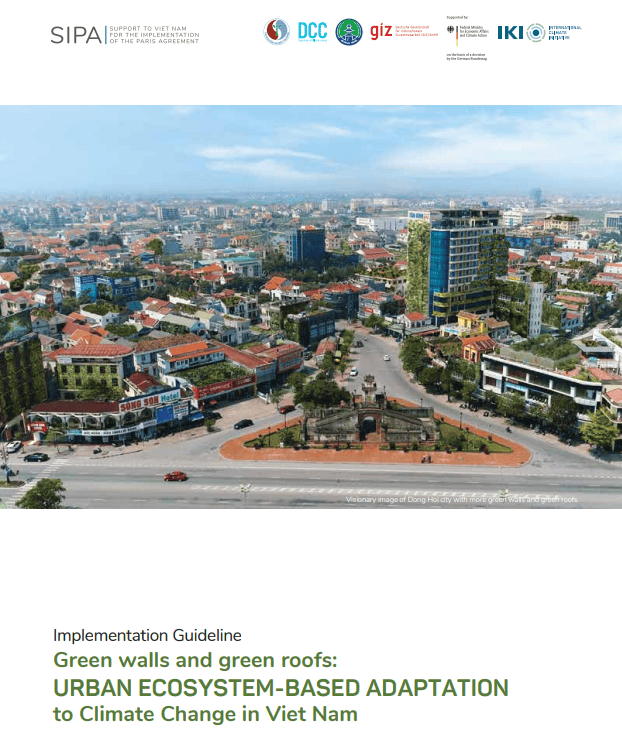
Increasing urbanization, coupled with limited urban planning, puts cities at risk from climate change. Ecosystem-based approaches to Adaptation (EbA) are a cost-effective approach to reduce the vulnerability of urban and peri-urban communities to climate change. The Green wall and green roofs are defined also potential urban EbA components and can be seen as complimentary to the land-based gardens in the efforts of maintaining green spaces in urban areas while there is limited land. The Implementation Guideline on Green Wall and Green Roofs has been developed based on practical experiences of piloting Green Wall and Green Roofs in Dong Hoi city, Quang Binh province, Viet Nam in the scope of the “Support to Viet Nam for the Implementation of the Paris Agreement” (VN-SIPA) project. The guideline aims at enabling the implementation of such measures in a variety of other contexts and locations by providing basic technical concepts, details of benefits, and implementation procedures.
Implementation Guidelines on Water Retention Areas
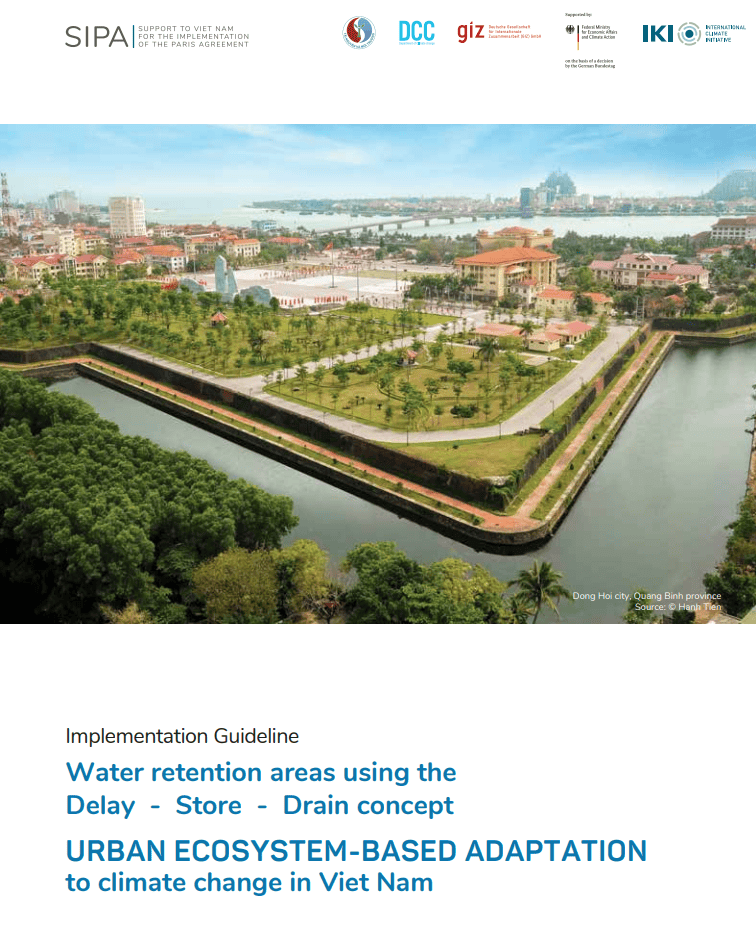
The interrelationship of urban development and growth and the increasing impact of climate change require that adjustments be made to urban planning and development. The integration of elements of Ecosystem-based Adaptation (EbA) into urban development provides an opportunity for cities create attractive, green, healthy, and livable urban spaces.
The Implementation Guidelines on Water Retention Areas have been developed based on practical experiences of piloting Water Retention Areas in Dong Hoi city, Quang Binh province, Viet Nam in the scope of the “Support to Viet Nam for the Implementation of the Paris Agreement” (VN-SIPA) project. The guidelines provide an in-depth analysis of the technical concepts regarding the measures and the financial requirements for users.
Training of Trainers Manual ‘Building capacity of border officials to address disaster displacement’ Edition no. 1
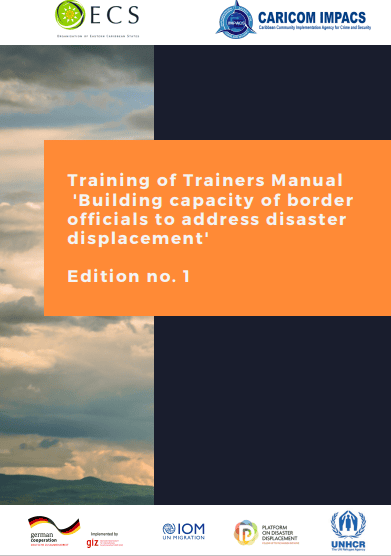
This trainers manual is intended to support border officials in building capacities to address disaster displacement. It is organised into three parts. The first chapter provides general guidance on planning and logistics for training sessions. The second chapter gives an overview on adult teaching strategies. And the last chapter dives deeper into topics like regional displacement frameworks, cross-border displacement in the Caribbean, addressing the factor of mental health and psychological first aid as well as outlining different flows and international protection.
